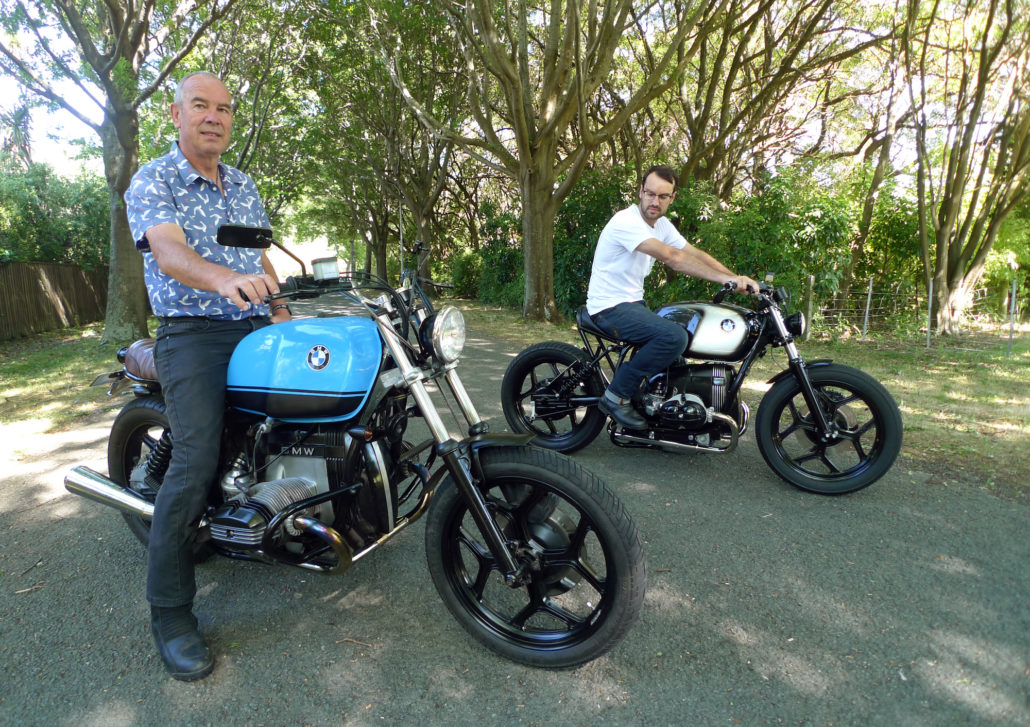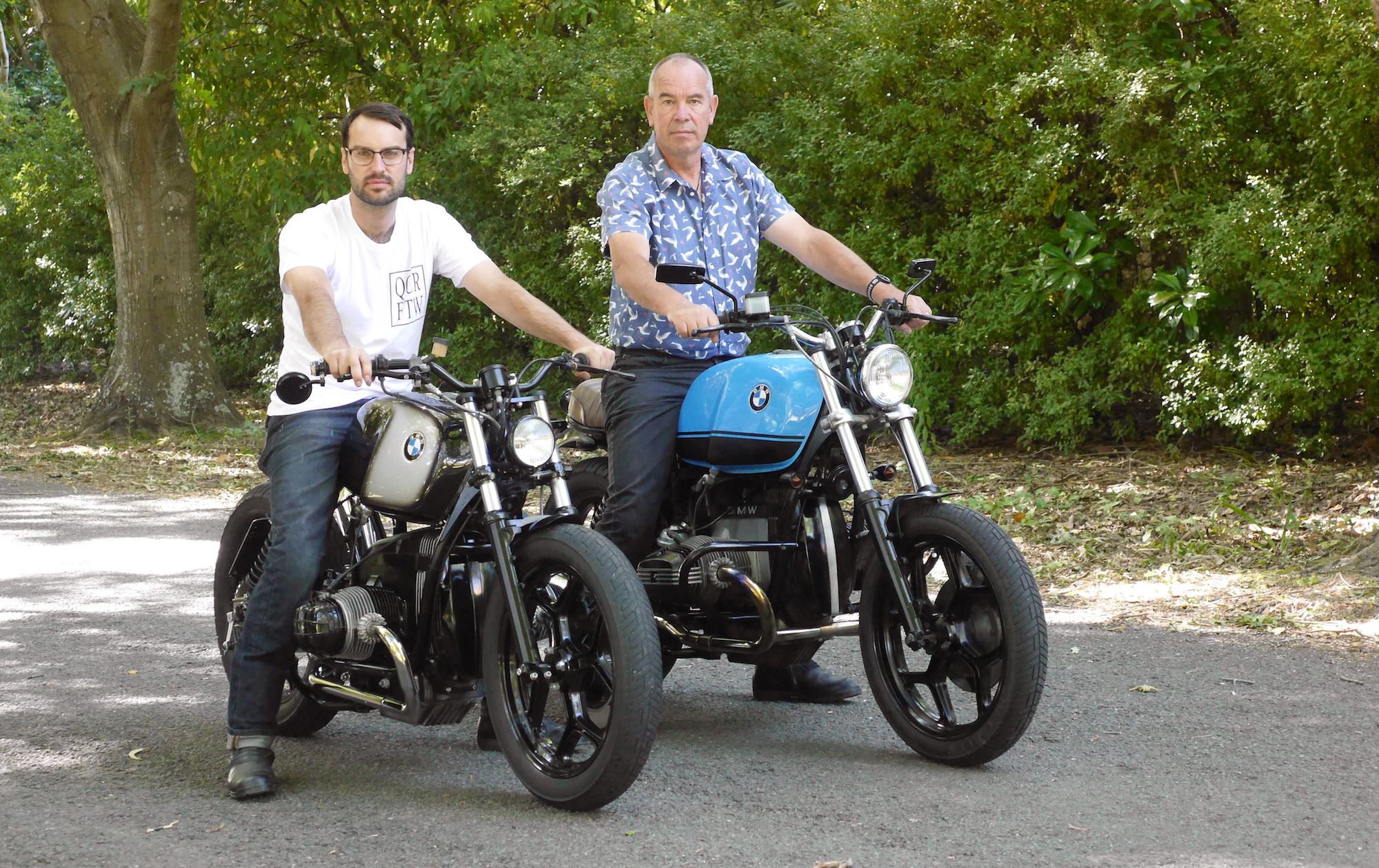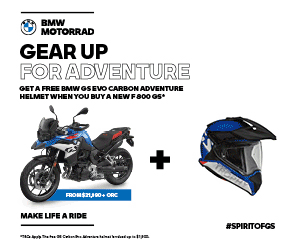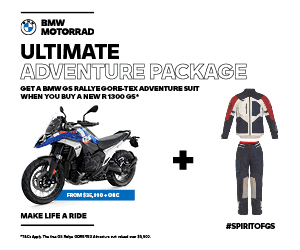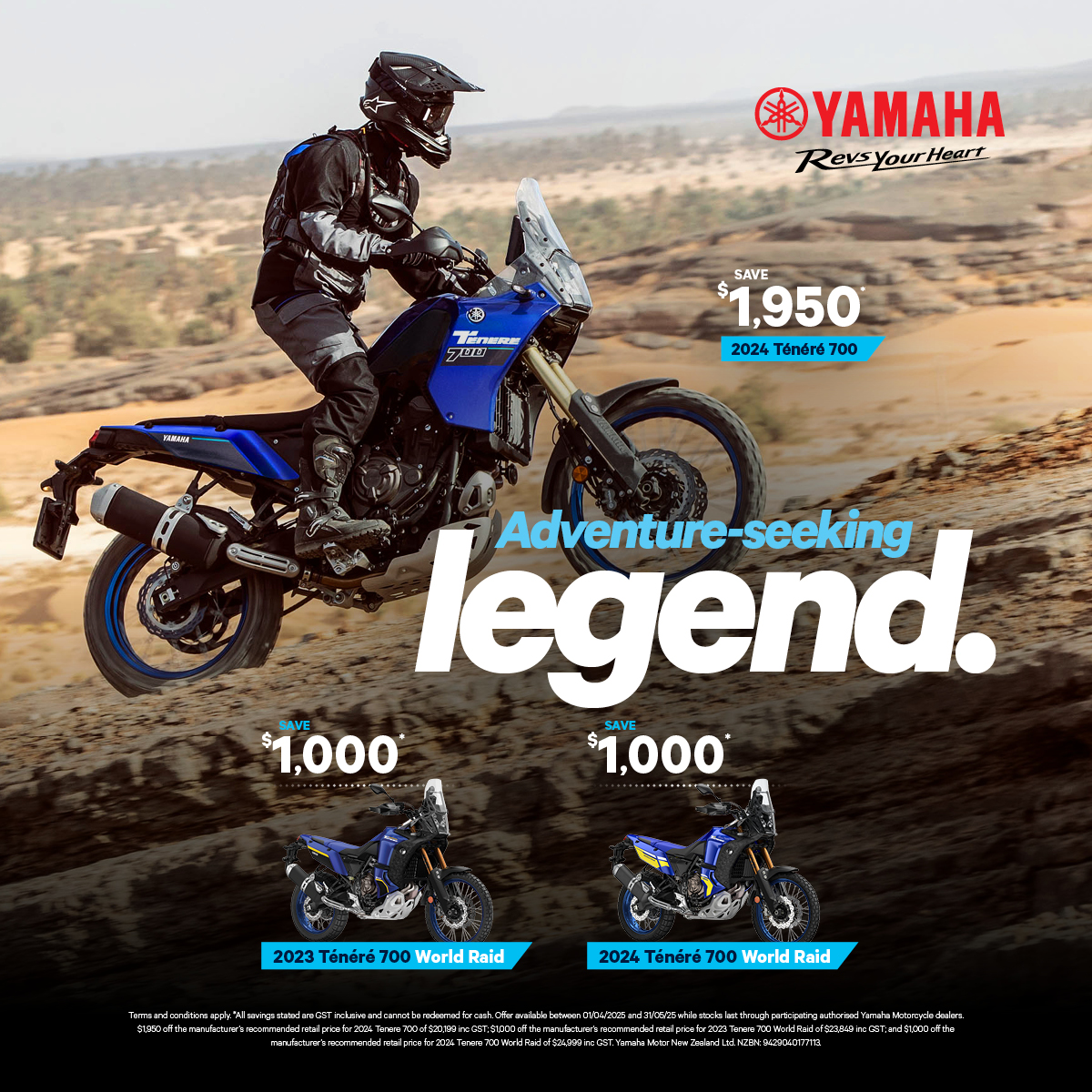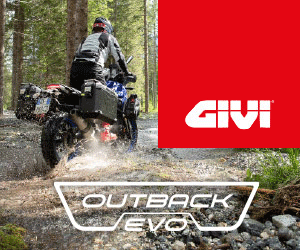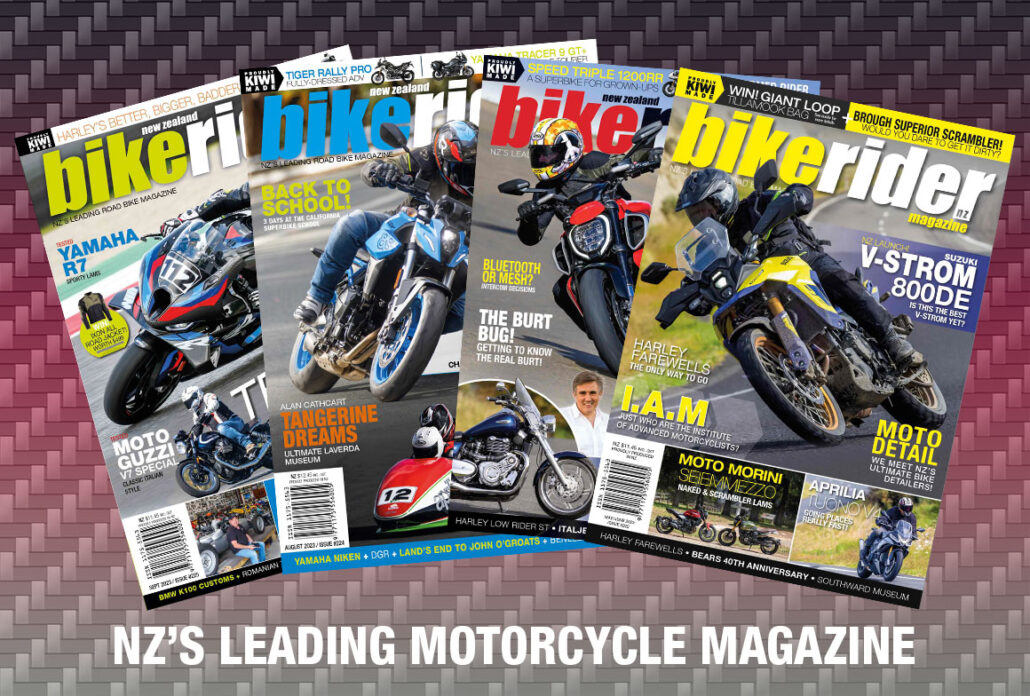Over the past twelve months, Swannie has been privileged (and pleasantly surprised), to meet three fathers and their sons whose motorcycles have nurtured both their personal relationships and those they have with their machines.
Richard (Andy’s father) has a rather long history with respect to riding motorcycles. “I was brought up on a farm in the foothills near Mt Somers. We had trail bikes which were primarily used to provide access for Dad and his stockmen to the more difficult areas in the backcountry. As a 10 or 11-year-old, I would also ride whatever bike was available at the time. I never got into motocross, just riding often difficult hill country and the inevitable gravel roads; many fond memories of tearing up the gorge roads! The first serious road riding I did was when I bought a BMW 650 Paris Dakar, and then I moved up to a BMW R1150 GS.”
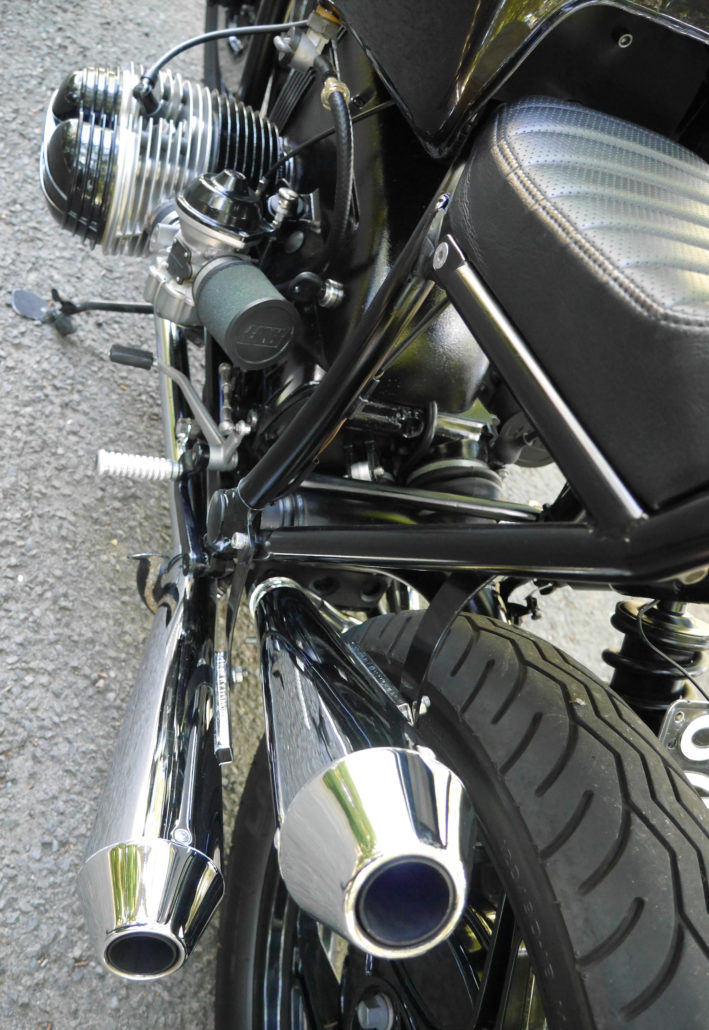
In contrast, Andy may seem a latecomer in the sense that when younger he spent a lot of time modifying pushbikes; then once working, he helped found the Quake City Rumblers. “I had rebuilt and modified many cars, and was also involved with the group of about three who introduced drift-triking to Christchurch.” At which point Swannie’s memory immediately rewinds to a day when he was riding over Banks Peninsula to visit Pete in Diamond Harbour. As he rode up the southern flank of Gebbies Pass, he noticed some distance ahead, a crazy dude sliding some plastic wheeled contraption at 80km/h into a sharp, steep downhill righthander!
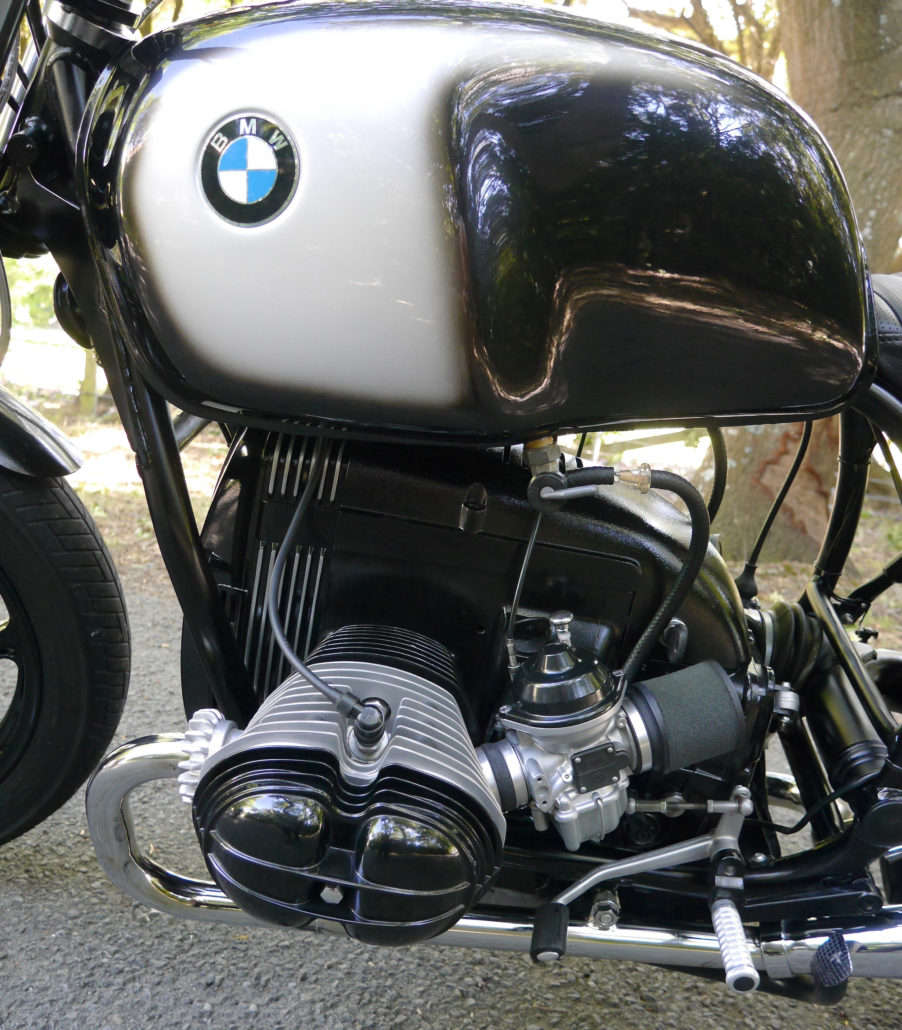
But for Andy, the QCR style simply spurred him on to want to build more motorcycles. “I started riding and modifying scooters and small bikes with QCR about 10 years ago, then 4 years ago I began working in the workshop of Bavarian Motorcycle Services. This involves repairs/rebuilds and maintenance of a variety of marques, but most commonly BMW. As a result, I then started looking for an air-head to rebuild and customise, this was reinforced by my boss Jim who described them as robust and reliable.”That said, this father/son relationship with motorcycles was probably given a nudge a little earlier when Richard was away from home working as a tour guide (these trips often lasting four or more weeks). Knowing that Richard’s birthday would occur not long after he returned home, Andy went around to his Dad’s garage and collected together a dismantled Postie bike (which Richard was in the process of customising) and then completed the bike as a birthday present for his Dad! In fact, as a result of the satisfaction associated with the completion of that project, Richard and Andy then set about building another Postie for Andy’s mum!
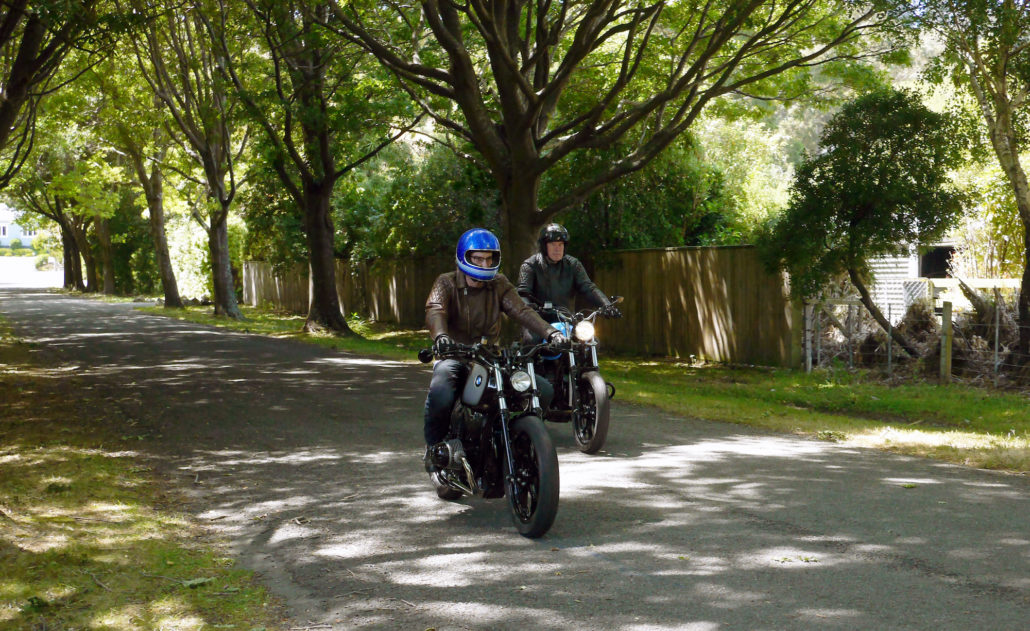
AIR-HEAD
Knowing Andy’s increasing knowledge and affection for BMW’s, Richard felt encouraged to search for and buy a decent ‘air-head’ which he could modify without going too extreme. To that end, he purchased a 1985 R80 RT which those familiar with that marque will know was a model with a cocoon-like fairing of substantial proportion. “I stripped the bike and then weighed the bits I wasn’t going to reuse. As a result, the bike had already shed 25kg; the bulk of that as a result of removing the fairing, but also included the seat cowling and tail section and side panels. The bike was mechanically very good. It hadn’t been over-worked, just looked tired.”
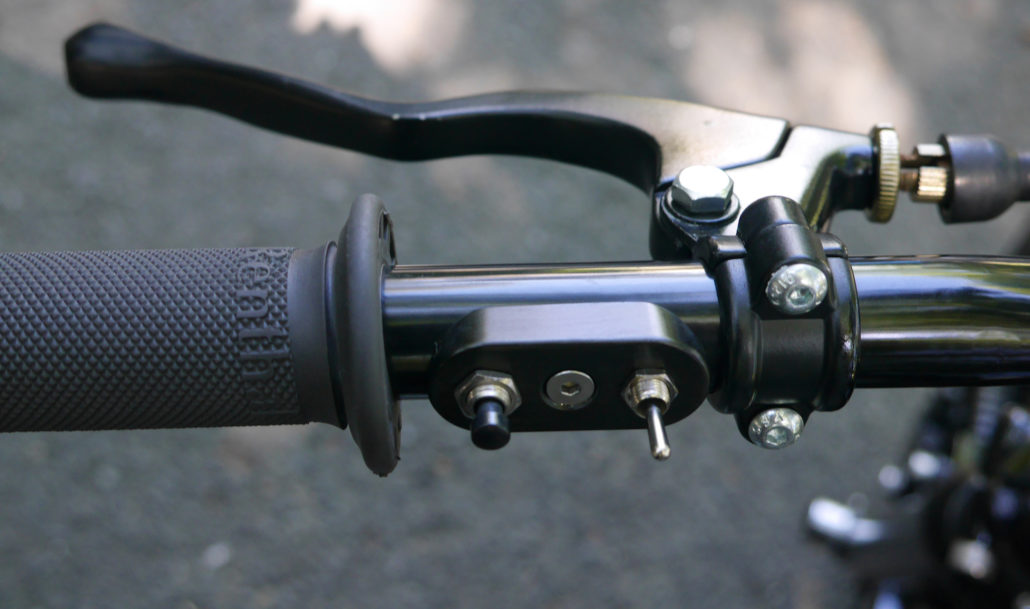
The sub-frame and seat were purchased from a supplier in the UK. However, after a few rides, Richard was decidedly unhappy with the latter. “The seat was hard as hell, not helped by the fact that the pan in section was u-shaped; this meant the manufacturer was forced to use thin foam to keep the seat profile from being too thick. It was expensive and disappointingly, a shocker with respect to comfort! They had also used low-quality foam, so I had my upholsterer friend, Lewis Horrell in Ashburton rebuild it, now it is just as I wanted. After all, for me, BMW motorcycles are about riding in comfort, I’m well beyond being willing to sacrifice that for fashion.”
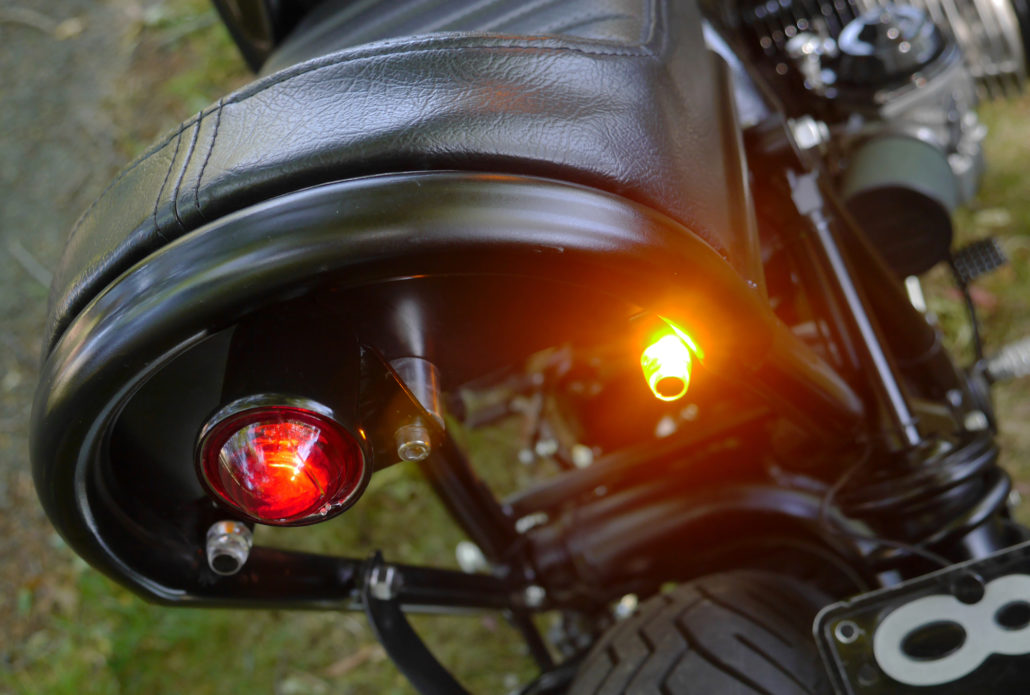
The headlight, indicators and a raft of other small fittings were purchased from Ellaspede in Brisbane. Andy observes, “We were returning from a family holiday in Bali and had a stopover in Brisbane. We knew about Ellaspede, so Dad and I made a compulsory visit. They have a huge array of ‘Posh’ replacement parts, Japanese and most manufactured from billet aluminium rather than plastic. Having gathered those bits together, it meant we could progress more quickly towards completing Dad’s bike.”
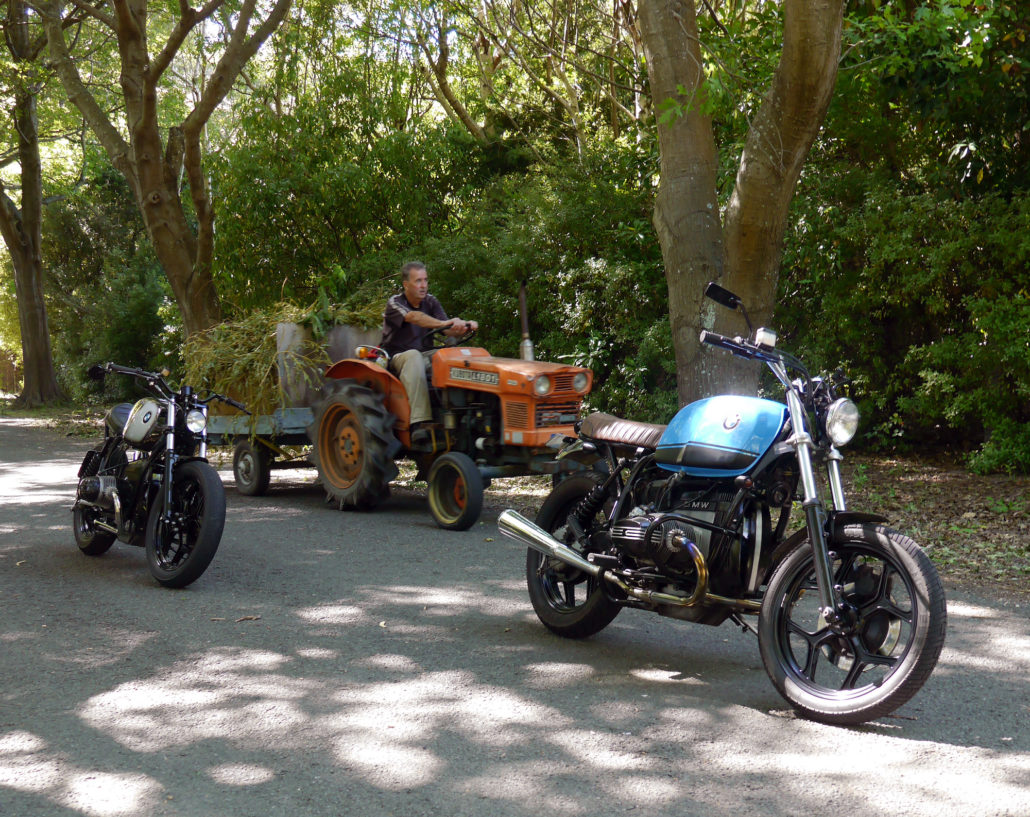
Richard had already made the decision with respect to how he wanted the bike to look. “Basically, I wanted the bike to look as standard as possible without going overboard.” The rims are powder coated, and the guards have been cut and reshaped, the tank colour selected from a colour chart simply because Richard liked it and, wanted something different. Joe Barwick painted the panel work on both bikes, and Jonny at the Signlab did the stripes on Richard’s tank as a way of making it look less bulky. “I ride the bike whenever I can, but I’m away a lot with my work, and this tends to be concentrated in the warmer months. So rides happen when I’m home between jobs, just when the opportunity arises.”
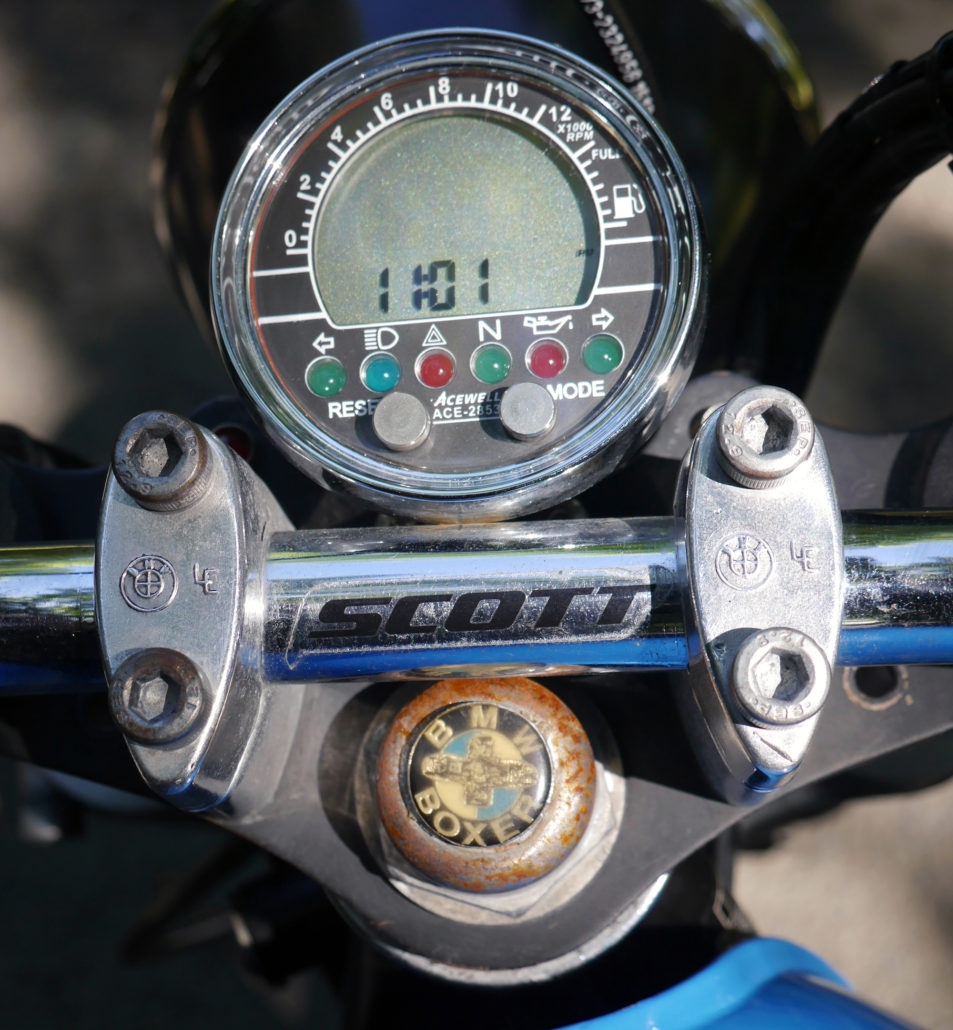
As Andy has indicated, the build of his 1986 R65 was a longer (2 year) project, than Richard’s. He bought the bike when he was still on a motorcycle ‘L’ plate. “It had done 130,000 kays. I bought it from a guy in Timaru, and it was in good nick, running perfectly. When I rebuilt it, I checked the motor, replaced seals, new gaskets and clutch. Once back to the bare frame, I made the decision I didn’t want to build something that could be categorised. It had to not only look good but also be comfortable.”
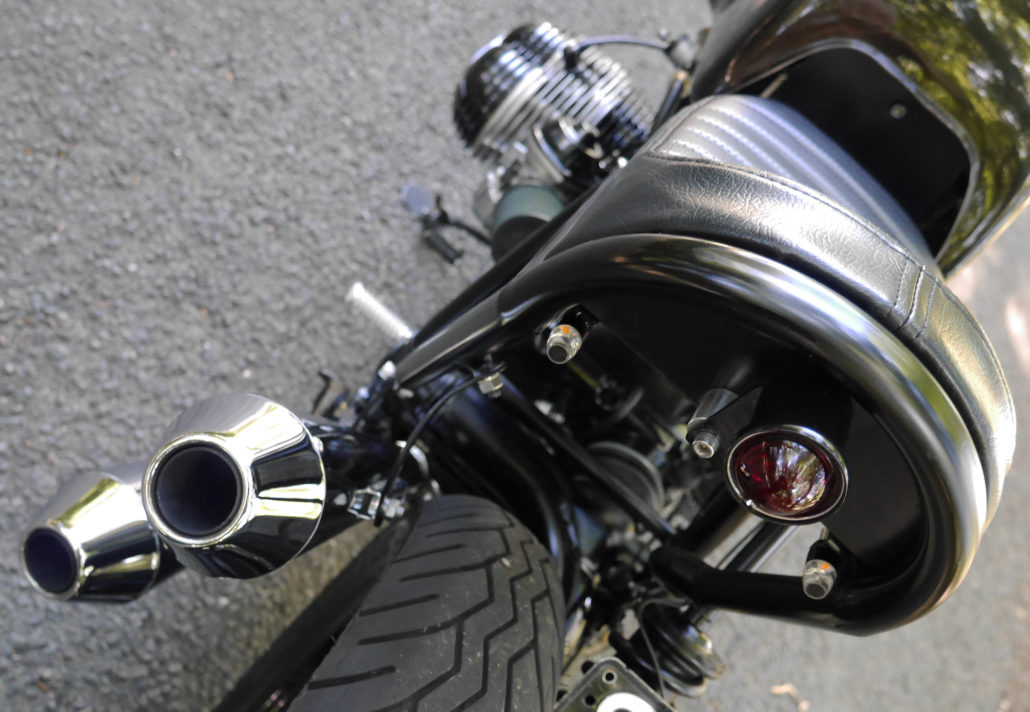
In fact, the short seat with its minimal rear ‘cowling’ is a real eye magnet when the bike is first viewed. Andy modified a factory sub-frame for the new seat, one of the more complicated tasks cutting and reshaping the tube so that it would pass, unobtrusively behind the shock absorber. That said, he has also fabricated a twin-seat sub-frame with luggage fittings, the seat, also upholstered by Lewis, with the comfort of both rider and pillion in mind. The front guard Andy made from sheet alloy using an English wheel under the guidance of a friend Sam Priest, “I really want to learn to use these more traditional techniques, it’s a very creative and satisfying thing to be able to do.”
The more observant readers will have noticed that some alloy parts have been vapour-blasted, this finished on a blasting unit that Andy and Jonny (Jonny’s Speed Shop) built themselves. Continuing along the theme of DIY, Andy then built the exhaust system out of mild steel because “I wanted to become a reasonable TIG welder and doing is learning.” While the exhaust was being chromed, he then set about lengthening the bars, the finished product a nod to Andy’s undoubted metal-working/welding skills.
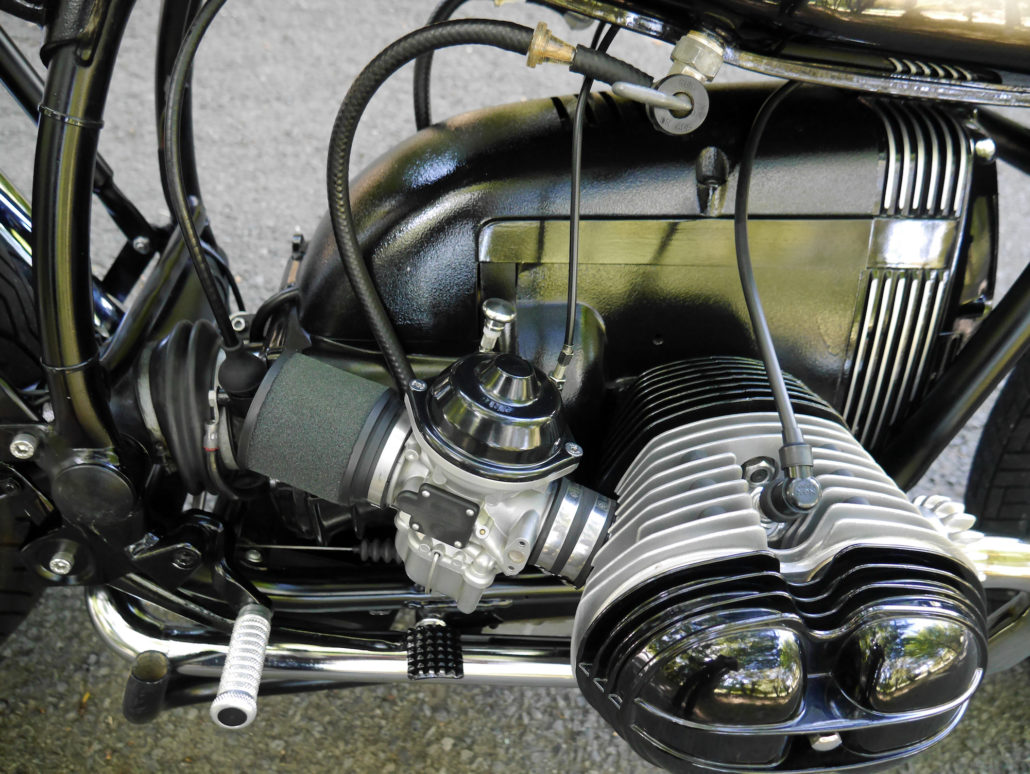
Andy and a friend painted and powder coated the wheels, frame and all remaining body parts. Joe Barwick painted the tank, but then Andy has another yellow tank available should the setting warrant. It was recovered from a CB 750 race-bike and with “a heavy period rust-burn patina and a hand-painted overlay of sponsor’s logo’s.” That said, much of the appeal in this bike
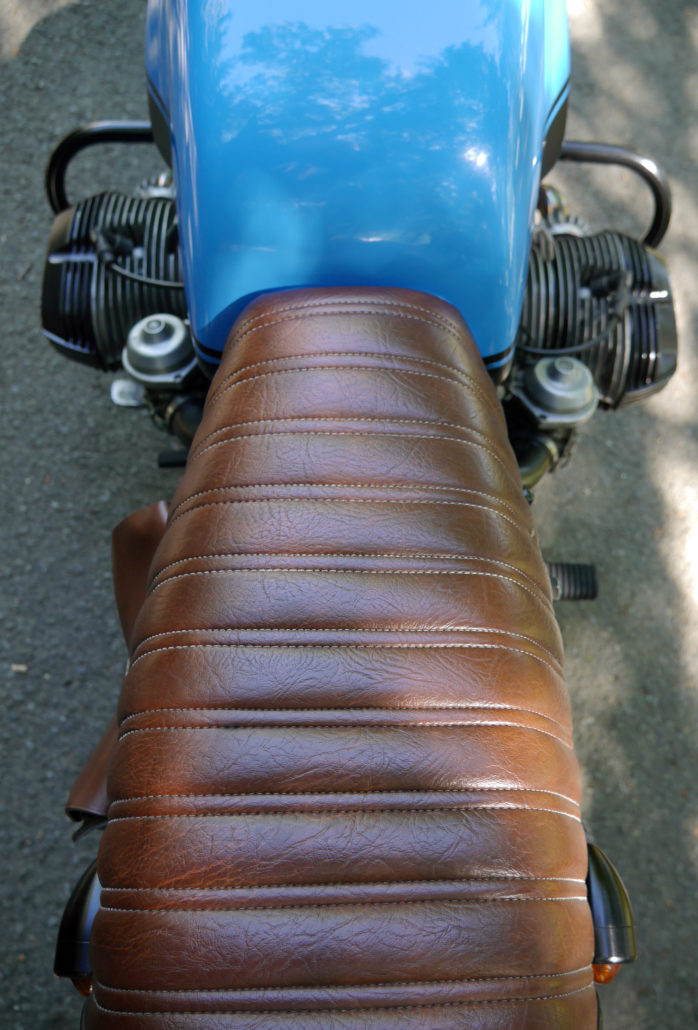
TIME TO THINK
In many respects, the fact the build took about two years was an advantage, in the sense that as Andy observes, “That gave me time to think about it.” Because, at his work, Andy has the opportunity to ride many different makes and styles of motorcycle, he realises he has built a machine that offers a pleasant and comfortable ride.
Is he satisfied? The answer is yes; perhaps a better aftermarket shock (expensive), flat-slide carbs (expensive) and a big-bore (860) kit? “At the moment I’m satisfied with this bike. My intention is to build another one. I’ve already bought another R65 and it should be easier this time around with the knowledge gained. I’m figuring this project should take me about three months and once completed, I’ll sell it.”
At this point Richard asks for the key to Andy’s R65, he then turns on the ignition and switches the right indicator on. For such a small unit it is amazingly bright! No tin-canned punter should have any doubt as to Andy’s intention… he’s going right!
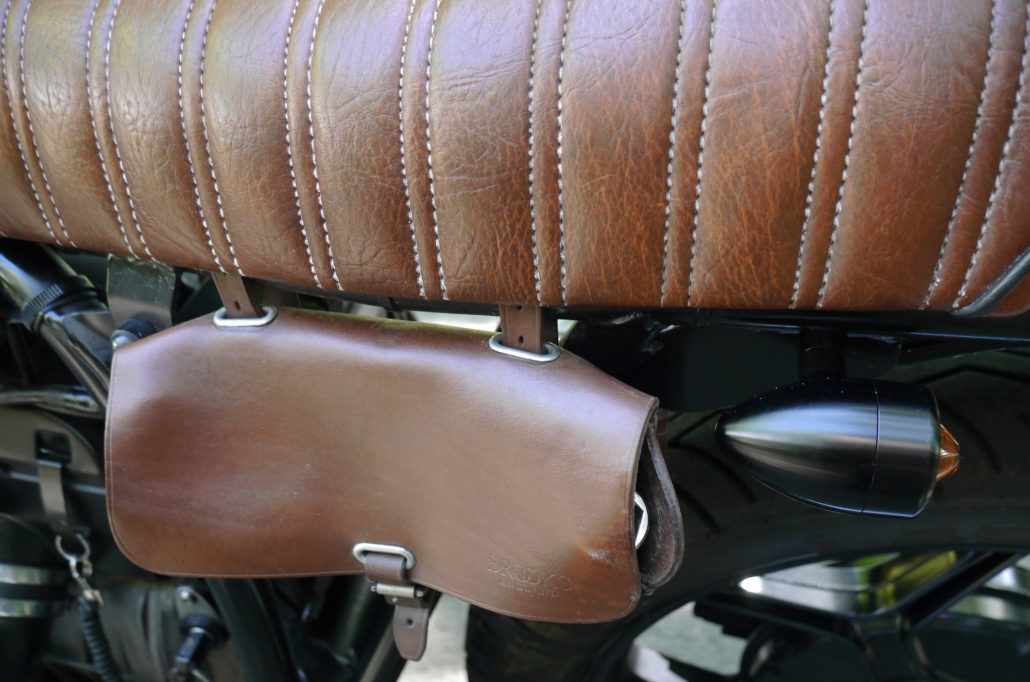
CHANCE ENCOUNTERS
From the photos, BRM readers will get a picture of the Horatane Valley venue Andy had suggested as a good place for the shoot. In fact, I then decided the tree-lined avenue was so good, we may as well just lie down on the grass verge beside a high hedge and continue the conversation/interview.
Just as Richard had switched the ignition off after the indicator demonstration, I heard the unmistakable sound of an older American V8 approaching from behind; slow-revving, under-stressed, a symphony of rattles. We all look around, our collective gaze filled with chrome; grill, domes, cones all slightly weathered, brightness peeking through clouds of corrosion and grime. Immediately I identify it as a De Soto mid-’50s, and later check out the rear guard and trunk; it’s a Diplomat de Luxe.
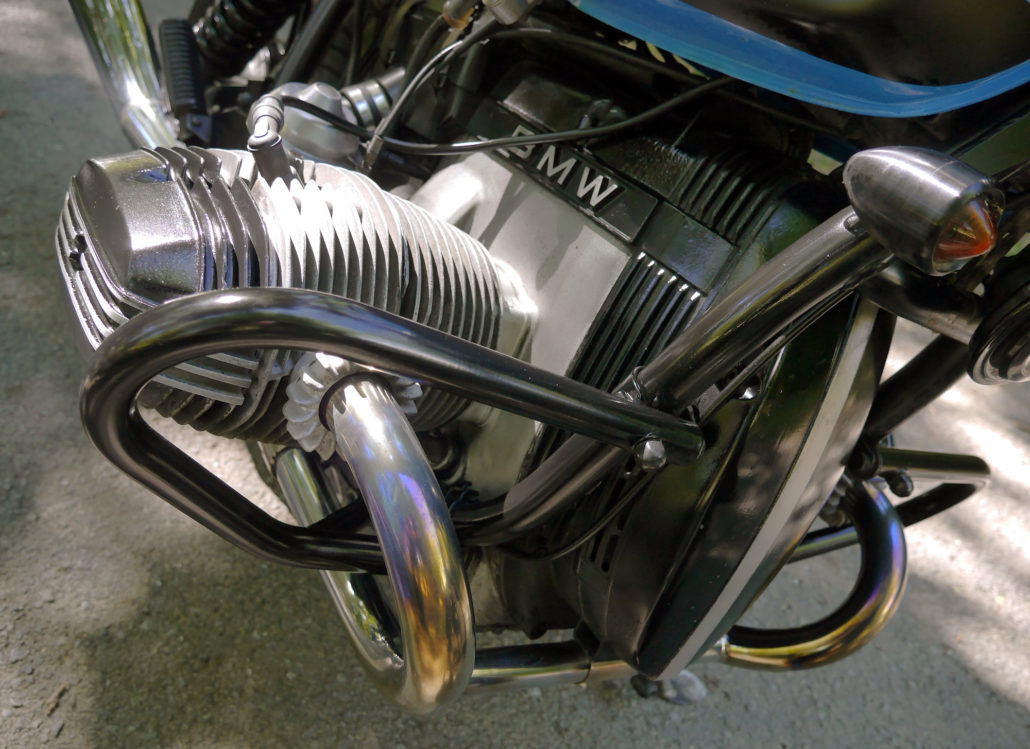
Through the open driver’s window, “Gidday, whaddayouse up to?” The driver then hops over, leans towards me hand extended, “Hi, I’m Lee. Bikes are looking nice; oh, and I bet you’ll never guess what I bought yesterday?”
Our silence was enough to encourage an answer, “A GPZ 900, GS 1000 dog, RG 350 minus motor and rear-wheel but has only done 8000 kays. Paid $1000 for the lot. Been in storage; bloke didn’t pay rent and then shot off overseas, so I bought the lot, going to on-sell them.”
At this point, and I suspect for my information, Richard then asks Lee how many bikes he owns at this point in time? Lee responds, “I think about 60, so you see I don’t need this stuff I’ve just bought. Anyway, got to
Words and Photos: Swannie
